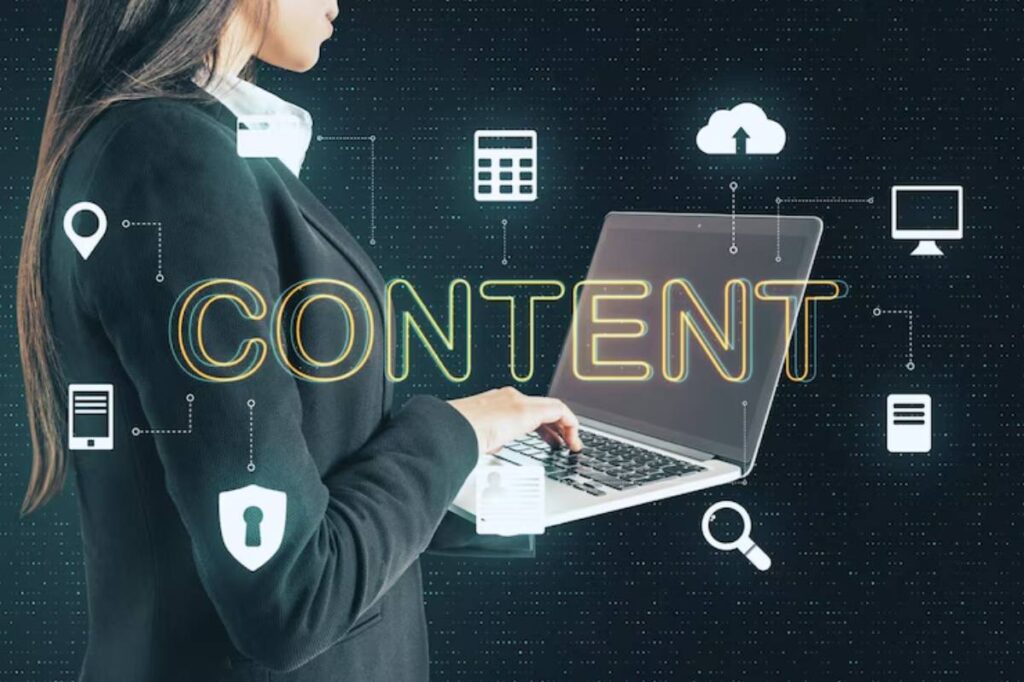The Personal Development Blog

Quality vs Quantity in Digital Content
You open your phone for a quick check-in, and suddenly it’s 45 minutes later. You’ve skimmed three news headlines, watched two video reels, clicked on a dozen random posts, and you’re not even sure what you were originally looking for.
If this sounds familiar, you’re not alone.
The internet today bombards us with content at every scroll and swipe. News feeds refresh endlessly, YouTube suggests another video, podcasts auto-play, and inboxes fill with newsletters you forgot to subscribe to. This constant digital noise creates a cycle of content overload, where the sheer volume drowns out anything truly valuable.
This article explores the very real tension between quality vs quantity in digital content, and why embracing a mindful digital diet through a minimal media strategy isn’t just helpful — it’s essential for your mental clarity, focus, and time.
The Problem: When More Isn’t Better
We’re Consuming More Than Ever — But Retaining Less
Studies show that the average adult now spends over seven hours a day consuming digital media, which includes everything from TikTok videos and Netflix binges to work emails and digital news.
But how much of that information do you actually remember?
Chances are, not much. And it’s not your fault. The human brain wasn’t built to process this much content. Our attention is constantly being pulled, making it harder to concentrate, absorb meaningful messages, or even remember what we just read.
The result? A growing sense of fatigue, restlessness, and digital burnout.
The “Quantity Trap” in Modern Media
Social platforms and streaming services are designed to feed you more, not better.
Think about:
- Auto-play features nudging you into the next video
- Infinite scroll on apps like Instagram or Reddit
- Clickbait headlines that offer little substance
- Recycled content disguised as something new
In this environment, quality content often gets lost. You may have the intention to read that longform article or watch a meaningful documentary, but instead, end up watching 12 minutes of short videos with no real takeaway.
This isn’t just a personal problem — it’s a systemic one. And it’s time to take back control.
What Does “Quality” Content Actually Mean?
Content That Feeds, Not Clutters
High-quality digital content isn’t just well-produced — it’s:
- Intentional: Created with a purpose, not just to fill space
- Valuable: Offers insights, knowledge, or emotional impact
- Respectful: Respects your time and intelligence
- Thought-provoking: Encourages reflection or action
This could look like a podcast that deepens your thinking, a blog post that solves a problem you care about, or a video that inspires positive change.
It’s Not About Length — It’s About Impact
Don’t mistake long content for high-quality content. An article can be 2,000 words and still say nothing meaningful. Meanwhile, a two-minute clip can completely shift your perspective.
The key is impact. Does the content stay with you? Does it add something to your day — clarity, perspective, motivation, or useful knowledge?
If not, it’s likely adding to the digital noise.
Spotting the Signs of Content Overload
You might be digitally overfed if you’ve noticed any of the following:
- Difficulty concentrating on long-form content
- Jumping from one media source to another without finishing any
- Feeling anxious or mentally drained after time online
- Avoiding deep tasks in favour of quick media hits
- Increased screen time, yet feeling less satisfied
These aren’t signs of failure — they’re signals that your brain is overloaded. A minimal media strategy helps you step back and filter through the noise.
Building a Minimal Media Strategy
1: Audit Your Digital Diet

Start by observing your current habits. Keep a media journal for two or three days.
Note:
- What platforms you use most
- When you tend to consume content (e.g. during meals, before bed)
- What type of content you’re drawn to
- How you feel afterwards
This reflective exercise often reveals surprising patterns. You might find you’re spending hours consuming content that adds little value — or triggers stress.
2: Define Your Media Values
Ask yourself:
- What kind of content enriches me?
- What topics truly interest me?
- Who are the voices I trust and want to follow?
- What’s my ideal relationship with digital media?
You’re essentially choosing a media compass — a set of principles that guide what you consume and why. This simple shift transforms media from something that happens to you into something you engage with by choice.
3: Curate, Don’t Collect
Be selective about the content you allow into your digital space.
That means:
- Unsubscribing from newsletters that no longer serve you
- Following fewer, better voices on social platforms
- Limiting your feeds to topics and people aligned with your values
- Switching off notifications that pull you into rabbit holes
Less isn’t just more — it’s smarter. Think of it like curating a gallery: you want each piece to matter.
If you’re looking to build on this momentum, our guide to the 80/20 rule for app usage shows you how to prioritise high-impact tools in your digital life.
Embracing a Mindful Digital Diet
Consume With Intention
Start each online session with a clear purpose. Before you unlock your phone or open your laptop.
- What do I need right now?
- Is there a better offline alternative?
- How long am I choosing to spend on this?
This creates a pause between impulse and action — a powerful shift in any digital habit.
Protect Your Deep Work
Content overload often comes at the expense of deep thinking. When you’re bombarded with updates, it becomes harder to stay focused on meaningful tasks — reading a book, writing, solving problems.
Carve out distraction-free time blocks where no media is allowed.
Use tools like:

- Freedom or Cold Turkey to block distracting websites
- The Pomodoro Technique to manage focus time
- Greyscale mode on your phone to reduce stimulation
These strategies help you reclaim your attention and rebuild your cognitive stamina.
The Benefits of Less But Better Content
Better Retention and Learning
When you slow down your media intake and focus on quality, you actually retain more information. Your brain gets a chance to process, link ideas, and develop insights, rather than staying in reaction mode.
Enhanced Emotional Wellbeing
Constant exposure to low-quality or emotionally charged media (think: doomscrolling or outrage-fuelled content) can drain you. High-quality content, on the other hand, can elevate your mood, inspire action, and create a sense of purpose.
You’re also less likely to experience comparison fatigue — a common effect of endless, polished social media content that leaves many people feeling inadequate or unfulfilled.
More Time for the Things That Matter
By cutting digital clutter, you free up time and energy for other meaningful activities — connecting with people, hobbies, rest, or even boredom (yes, boredom can be healthy!).
When you’re not constantly filling space with stimulation, life slows down. You start noticing more. Thinking more. Feeling more.
Creating a Sustainable Approach
Regularly Reassess Your Media Mix
Your interests and goals will change — and so should your media habits.
Once a month, reflect on:
- What content still serves you
- Which sources or platforms need pruning
- Whether your current digital routine aligns with your values
You’re not “quitting” media — you’re curating it.
Don’t Aim for Perfection
You’re not a robot. You’ll still watch mindless videos now and then, or scroll when you’re tired. That’s OK.
The goal isn’t total discipline — it’s conscious choice. With every small tweak, you’re building a healthier relationship with media.
Even adding one high-quality source, like a podcast or newsletter that consistently delivers insight, can shift the tone of your day.
Final Thoughts: Choose Better, Not More
We’re living in an age of abundance, but not all abundance is good. The internet will always offer more videos to watch, more articles to skim, more posts to scroll. But more doesn’t mean better.
By focusing on quality over quantity in your digital content, you reclaim your attention, your time, and your peace of mind.
You begin to engage with content that nourishes rather than depletes. You make space for deep thought, genuine emotion, and purposeful living.
So here’s your invitation: Choose what you consume. Choose what you keep. Choose what you let go.
Start now by reviewing your top three digital content sources. Are they feeding your mind and spirit, or just filling the silence?
If you’re ready to go further, try combining this approach with our guide to practising tech mindfulness at work — a powerful next step in building a digital life you love.









